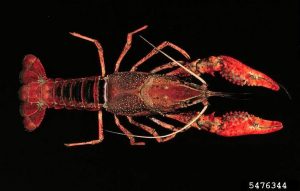
This edition of News to Us highlights both good and bad news on local algal blooms as well as two stories on non-native species making headlines – one of concern, the other of little concern. News at the federal level is also mixed. Read about the implications of the proposed Clean Water Rule repeal and some hopeful news on the federal allocation of funding supporting Great Lakes restoration.
Improving Water Quality In Ypsilanti Township’s Ford Lake
After decades of trouble with algal blooms in Ford Lake, an impoundment on the Huron River in Ypsilanti Township, researchers and township staff found a solution. Changing operations of the Ford Lake Dam has kept algal blooms at bay in most years and the water quality of the lake is improving.
Potentially toxic algae found in two Oakland County lakes
Two lakes, including Pontiac Lake in the Huron River watershed, are experiencing significant algal blooms this month. It is suspected that the blooms may contain toxic algae. Oakland County health officials recommend avoiding contact with the water at this time and keeping pets out as well. The article has a list of recommended precautions.
Tiny jellyfish reported in Lake Erie
Jellyfish in Michigan? Headlines have been circulating on the invasion of this non-native species recently because of new sightings in Lake Erie and St. Clair. And while it is true that this is a non-native species, it has been in Great Lakes waterways for some time now and has not reached nuisance levels. Also worthy of note is that the tentacles of this jellyfish are too small to sting humans, so swim away. For more on freshwater jellyfish see Huron River Report, Spring 2008.
Tiny lobsters of doom: Why this invasive crayfish is bad news
In other non-native species news, the red swamp crayfish has been confirmed in Michigan. This species has a lot of potential to become invasive and cause disruption to the native ecosystem. Their deep burrowing capacity is known to cause erosion, they out-compete native crayfish for food, and prey on small fish and fish eggs. The DNR is asking people to report potential sightings of this invader.
Trump plans to roll back environmental rule everyone agrees on
This opinion piece is written by former EPA Administrator Gina McCarthy and Ken Kopocis, formerly of EPA’s Office of Water. The article describes what is at stake with the Trump Administrations proposed roll back of the Clean Water Rule. There has bipartisan demand for clarity on the 1972 Clean Water Act which the rule provides. Much work has been done to establish the rule which provides clear criteria for what waters are protected under the Clean Water Act. To provide your remarks on the proposed repeal, see our earlier blog On the chopping block: clean water. Comment period closes September 27th.
House appropriators approve $300 Million for Great Lakes; reject amendment on Clean Water Rule
Some good news coming out of the federal government on the environment front. The Great Lakes Restoration Initiative, originally scheduled to be zeroed out in the 2018 budget, has been approved at $300 million by U.S. House appropriators. The funding still has to make it through the Senate and White House before final approval.



